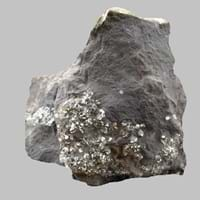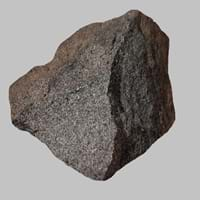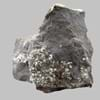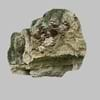Definition
Argillites are highly compact sedimentary or slightly metamorphosed rocks that consist largely or wholly of particles of clay or silt but lack the fissility of shale or the cleavage characteristic of slate
Theralite is a plutonic hylocrystalline igneous rock consisting of augite, olivine, calcic plagioclase and nepheline
Discoverer
Unknown
Unknown
Etymology
From Latin Argilla (clay) and -ite in English which became agrilla+ -ite = Argillite
From Greek to pursue
Class
Sedimentary Rocks
Igneous Rocks
Sub-Class
Durable Rock, Soft Rock
Durable Rock, Hard Rock
Group
Not Applicable
Plutonic
Other Categories
Fine Grained Rock, Opaque Rock
Fine Grained Rock, Opaque Rock
Texture
Clastic, Polished
Phaneritic
Color
Dark Grey to Black, Pink, Red, White
Dark Grey to Black
Durability
Durable
Durable
Scratch Resistant
Yes
Yes
Appearance
Rough and Dull
Veined and Shiny
Interior Uses
Decorative Aggregates, Homes, Interior Decoration
Decorative Aggregates, Flooring, Interior Decoration
Exterior Uses
As Building Stone, Garden Decoration, Office Buildings
As Building Stone, As Facing Stone, Garden Decoration, Office Buildings
Other Architectural Uses
Curbing, Whetstones
Curbing
Construction Industry
Used for flooring, stair treads, borders and window sills.
As Dimension Stone, Building houses or walls, Cement Manufacture, Construction Aggregate, for Road Aggregate
Medical Industry
Not Yet Used
Not Yet Used
Antiquity Uses
Artifacts, Monuments, Sculpture
Artifacts, Monuments, Sculpture
Commercial Uses
Fire resistant, Used to manufracture paperweights and bookends
Cemetery Markers, Commemorative Tablets, Creating Artwork, Laboratory bench tops, Jewelry, Sea Defence, Tombstones
Types
Not Available
Teschenite and Essexite
Features
Is one of the oldest rock
Smooth to touch
Archaeological Significance
Famous Monuments
Data Not Available
Data Not Available
Famous Sculptures
Data Not Available
Data Not Available
Pictographs
Used
Not Used
Petroglyphs
Used
Not Used
Formation
An argillite is a fine-grained sedimentary rock mainly composed of clay particles which forms from lithified muds which contain variable amounts of silt-sized particles.
Theralite is a fine-grained, hard rock which is a type of metasomatite, essentially altered basalt. It forms with or without crystallization, either below the surface as intrusive rocks or on the surface as extrusive rocks.
Mineral Content
Biotite, Chlorite, Feldspar, Micas, Muscovite or Illite, Plagioclase, Pyrite, Quartz
Augite, Olivine, Plagioclase, Pyroxene
Compound Content
Iron(III) Oxide, Potassium Oxide, MgO, Silicon Dioxide
Aluminium Oxide, CaO, Chromium(III) Oxide, Iron(III) Oxide, Potassium Oxide, MgO, Sodium Oxide, Silicon Dioxide, Sulfur Trioxide
Types of Metamorphism
Not Applicable
Cataclastic Metamorphism, Contact Metamorphism, Hydrothermal Metamorphism, Impact Metamorphism, Regional Metamorphism
Types of Weathering
Biological Weathering
Biological Weathering
Types of Erosion
Chemical Erosion
Chemical Erosion, Coastal Erosion, Glacier Erosion, Water Erosion, Wind Erosion
Grain Size
Fine Grained
Fine Grained
Fracture
Conchoidal to Uneven
Uneven, Splintery or Conchoidal
Streak
White to Grey
White
Porosity
Highly Porous
Highly Porous
Luster
Waxy and Dull
Waxy and Dull
Cleavage
Slaty
Non-Existent
Specific Gravity
2.56-2.68
2.5-2.8
Transparency
Opaque
Translucent to Opaque
Density
2.54-2.66 g/cm3
2.7 g/cm3
Resistance
Heat Resistant, Impact Resistant
Impact Resistant, Pressure Resistant, Wear Resistant
Deposits in Eastern Continents
Asia
Bangladesh, China, India, Russia
India, Russia
Africa
Ethiopia, Kenya, Morocco, South Africa, Tanzania
South Africa
Europe
Austria, France, Germany, Greece, Italy, Romania, Scotland, Spain, Switzerland
Germany, Greece, Italy, Scotland, Turkey
Others
Not Yet Found
Greenland, Mid-Atlantic Ridge
Deposits in Western Continents
North America
USA
Canada, USA
South America
Bolivia, Chile, Colombia, Ecuador, Peru, Venezuela
Bolivia, Brazil, Colombia, Venezuela
Deposits in Oceania Continent
Australia
New South Wales, New Zealand, Queensland, Victoria, Western Australia
New Zealand, Queensland
Argillite vs Theralite Characteristics
Though some rocks look identical, they have certain characteristics which distinguish them from others. Characteristics of rocks include texture, appearance, color, fracture, streak, hardness etc. Argillite vs Theralite characteristics assist us to distinguish and recognize rocks. Also you can check about Properties of Argillite and Properties of Theralite. Learn more about Argillite vs Theralite in the next section. The interior uses of Argillite include Decorative aggregates, Homes and Interior decoration whereas the interior uses of Theralite include Decorative aggregates, Flooring and Interior decoration. Due to some exceptional properties of Argillite and Theralite, they have various applications in construction industry. The uses of Argillite in construction industry include Used for flooring, stair treads, borders and window sills. and that of Theralite include As dimension stone, Building houses or walls, Cement manufacture, Construction aggregate, For road aggregate.
More about Argillite and Theralite
Here you can know more about Argillite and Theralite. The life cycle of a rock consists of formation of rock, composition of rock and transformation of rock. The composition of Argillite and Theralite consists of mineral content and compound content. The mineral content of Argillite includes Biotite, Chlorite, Feldspar, Micas, Muscovite or Illite, Plagioclase, Pyrite, Quartz and mineral content of Theralite includes Augite, Olivine, Plagioclase, Pyroxene. You can also check out the list of all Sedimentary Rocks. When we have to compare Argillite vs Theralite, the texture, color and appearance plays an important role in determining the type of rock. Argillite is available in dark grey to black, pink, red, white colors whereas, Theralite is available in dark grey to black colors. Appearance of Argillite is Rough and Dull and that of Theralite is Veined and Shiny. Properties of rock is another aspect for Argillite vs Theralite. The hardness of Argillite is 2-3 and that of Theralite is 7. The types of Argillite are Not Available whereas types of Theralite are Teschenite and Essexite. Streak of rock is the color of powder produced when it is dragged across an unweathered surface. The streak of Argillite is white to grey while that of Theralite is white. The specific heat capacity of Argillite is 0.87 kJ/Kg K and that of Theralite is 0.74 kJ/Kg K. Depending on the properties like hardness, toughness, specific heat capacity, porosity etc., rocks are resistant to heat, wear, impact, etc.Argillite is heat resistant, impact resistant whereas Theralite is impact resistant, pressure resistant, wear resistant.





